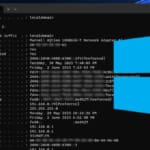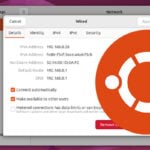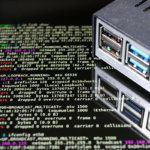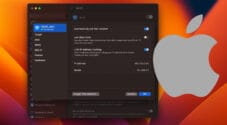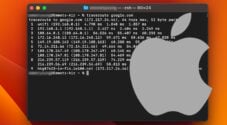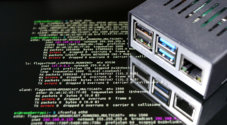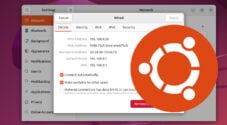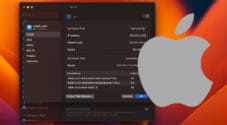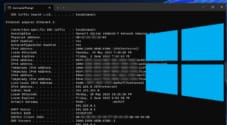In this tutorial, I will show you how to view the current Mac address for your computer running macOS.
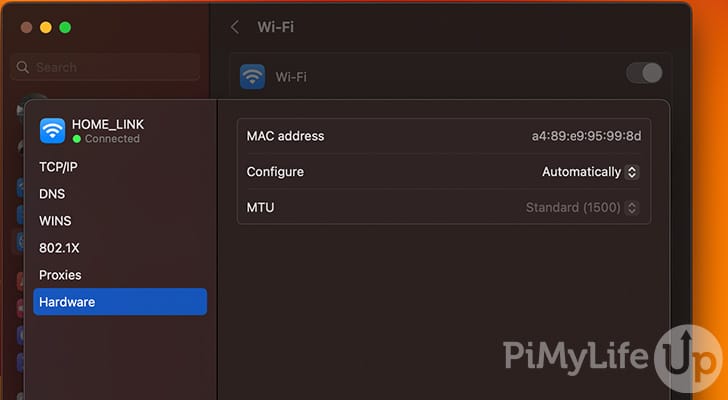
Finding the Mac address for your Mac computer is a relatively simple task and will not take up much of your time. Knowing the address may be useful for setting up networks and other tasks. This tutorial should work for any computer running MacOS such as MacBooks, Mac mini, Mac Studio, or iMacs.
A Mac address is a 48-bit unique identifier assigned to a network interface controller. This address is commonly used for communication within a network. The address will contain digits (0-9), lower-case and upper-case characters (a-f), and be in the format of xx:xx:xx:xx:xx:xx.
Unlike an IP address, a Mac address does not typically change unless you change it yourself. Therefore, assigning a static IP address to a Mac address is often a good practice, especially when running servers or services where you want the IP to remain the same even after a network reboot.
This tutorial covers using the desktop interface or the terminal for retrieving the Mac address for your network device.
Using the Desktop Interface
The desktop interface is the best method to retrieve the Mac address if you feel uncomfortable using the terminal application. The steps in this section are straightforward, so it should not take very long to find the address.
1. In the upper left corner of the screen, click on the Apple symbol. Then, in the dropdown menu, click system settings.
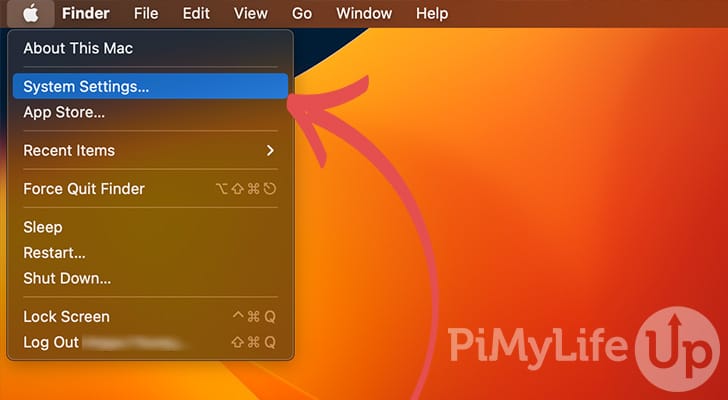
2. Click on the network tab and click on the active network that you are using. For example, if you are using Wi-Fi, click on the Wi-Fi option.
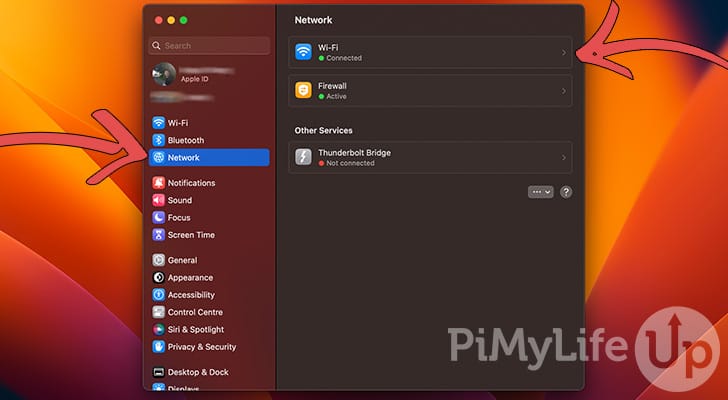
3. On the next screen, click on the details button of the active network. In my case, it is the HOME_LINK network.
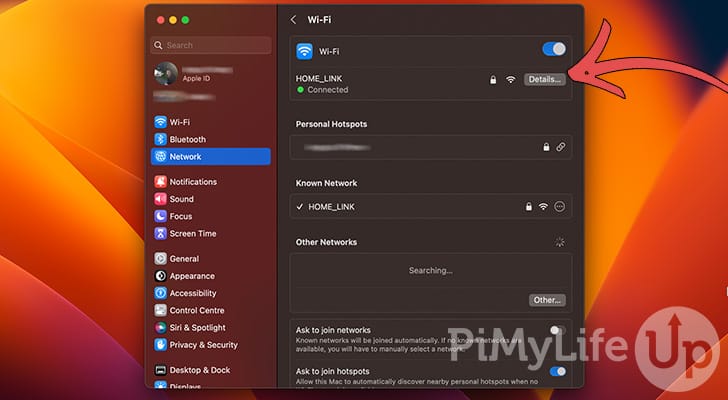
4. Now click on the hardware tab.
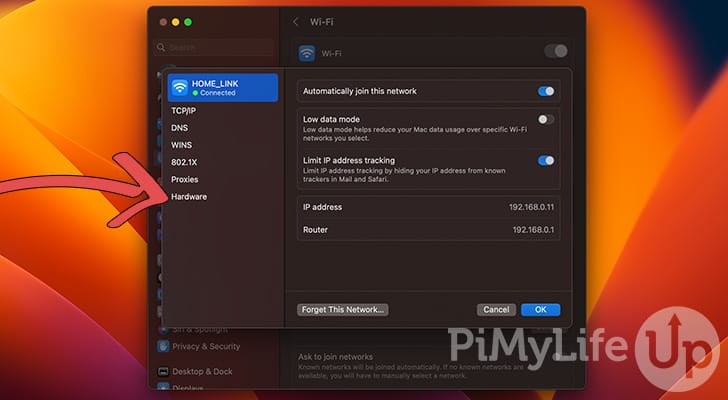
5. On this screen, your Mac address should be visible. For example, xx:xx:xx:xx:xx:xx is the layout of my address.
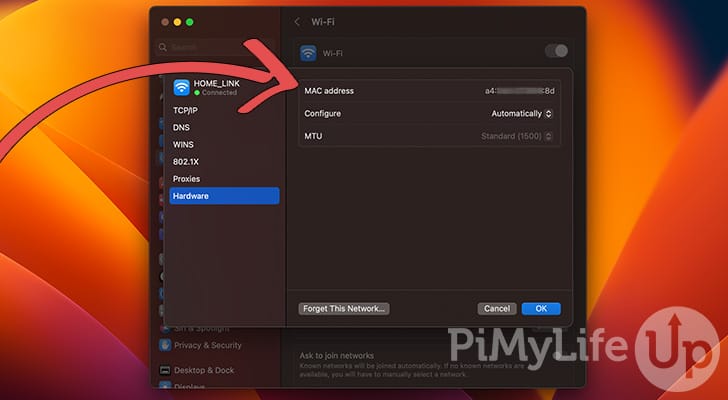
You can repeat this same process if you have an Ethernet connection.
Using the Terminal
You can use the terminal application on your Mac computer to retrieve the Mac address for your network device.
1. Open the terminal app. You can find the application by opening Launchpad and searching terminal.
If you prefer to use finder. Open the applications folder and go to the utilities folder. Click and load the terminal application.
2. In the terminal, write ifconfig. This command will output a range of network information.
ifconfigCopy3. The above command will output a fair bit of data, but you only need to focus on specific outputs.
You will need to pay attention to the interfaces that start with en, as these are physical network interfaces. en0 will be the WiFi entry while en1, en2, en3 will be either ethernet or IP over thunderbolt. You can use the -v option to confirm the type. For example, ifconfig -v en0 and look for “type”.
The image below is an example of using -v to check the type of a network interface.
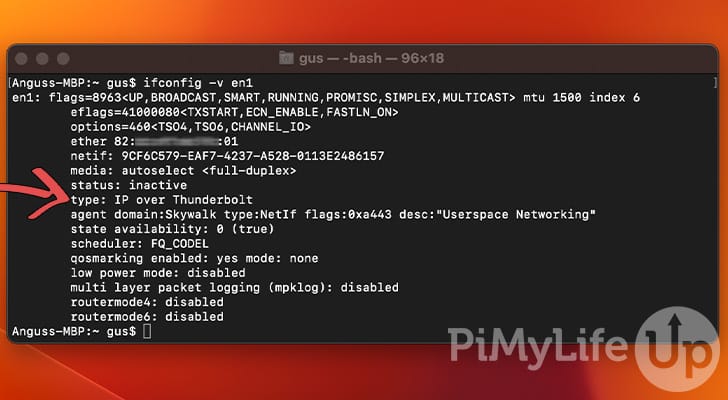
4. Now that we have confirmed the interface, we can quickly locate the Mac address. For example, our Wi-Fi is en0. Under this interface, look for the line starting with ether. Next to ether is the Mac address for that interface.
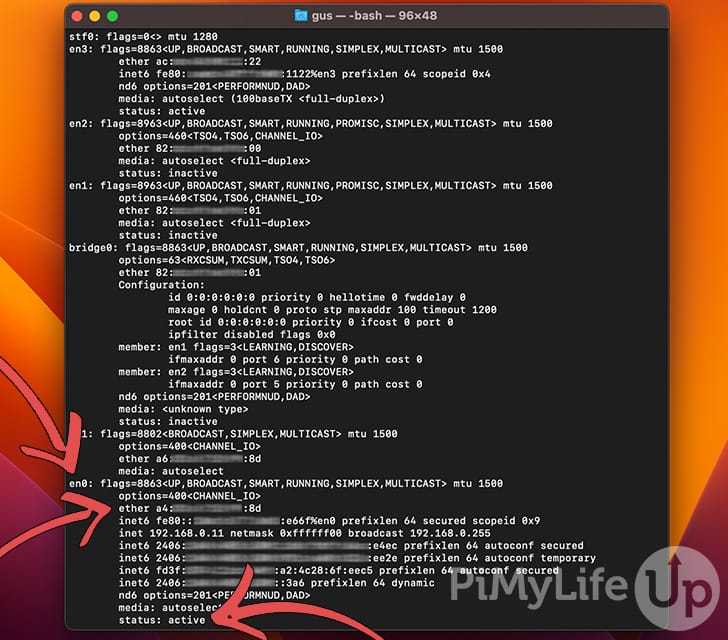
Conclusion
I hope you can find the Mac address on your Mac computer without any issues. Knowing this address will be useful for setting up networks correctly so that they are more secure and reliable.
We have an ever-growing number of tutorials using MacOS and its many features and applications. If you are new to Mac or want to learn more, I highly recommend you check out the tutorials.
If you encounter any problems or have any suggestions, please don’t hesitate to leave a comment below.
